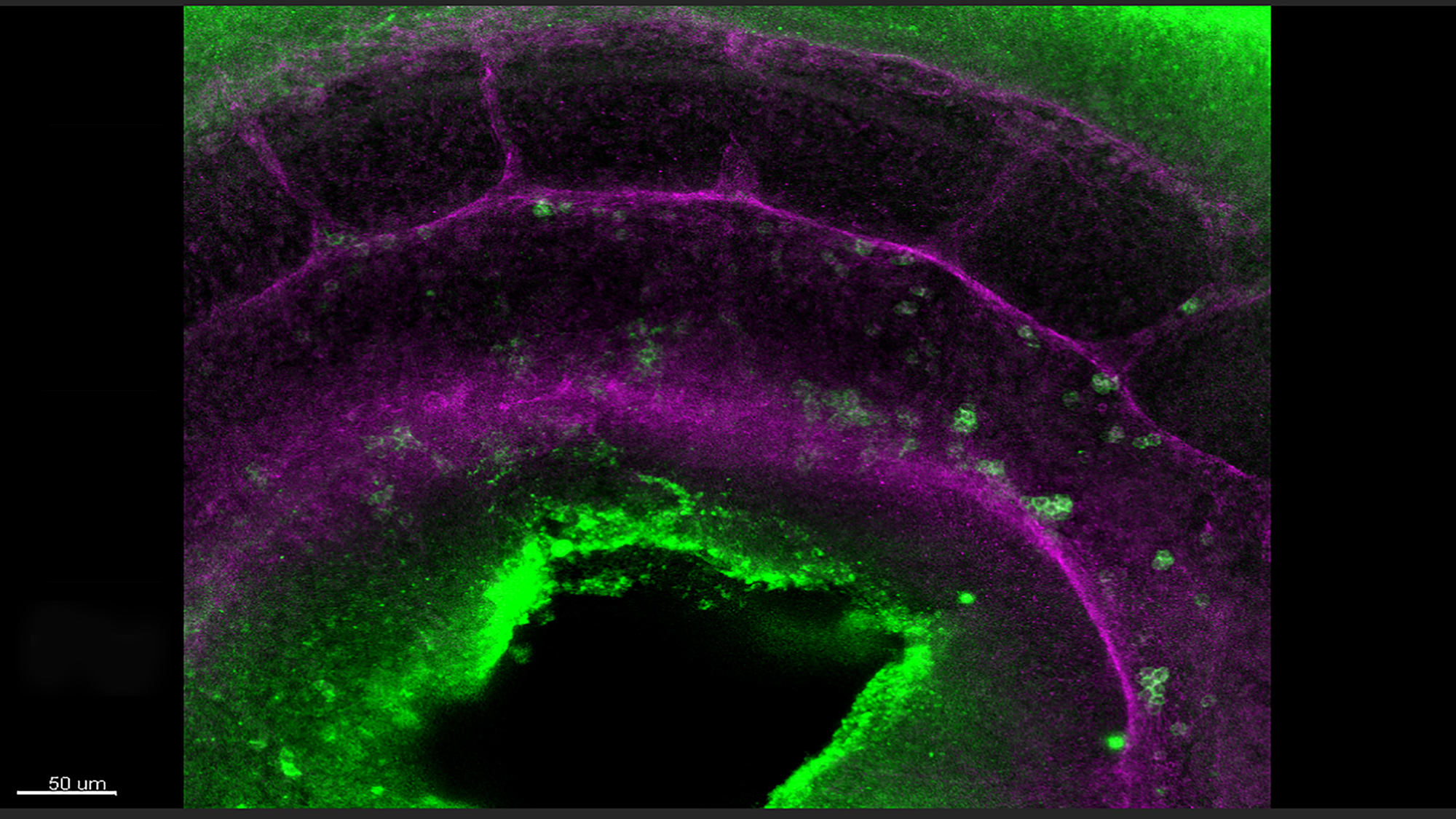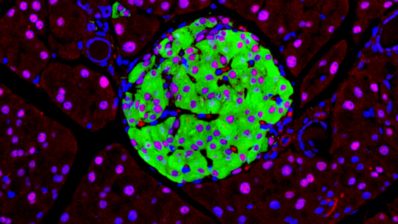Being able to generate blood stem cells in the laboratory would be an enormous step in the field of regenerative medicine and, specifically, in the treatment of patients with diseases such as leukemia or genetic pathologies that affect the blood who do not have a compatible donor.
This image belongs to a recent study that could open new options in this regard. In it, we can see the reconstruction of a mouse embryo aorta (purple) in which blood cells (green) are being created and move to the lumen of the blood vessel.
“So far, different types of blood cells, such as erythrocytes or platelets, have been generated in the lab, but it has never been possible to create a cell that has characteristics of a blood stem cell”, explains Anna Bigas, coordinator of the Stem Cells and Cancer Research Group at the Institut Hospital del Mar d’Investigacions Mèdiques (IMIM) and leader of the study.
The research team has analyzed, in mouse embryos and with computer models, the process by which endothelial cells – the cells that cover the inside of all blood vessels – become blood stem cells. And they have been able to verify that the interaction between two molecules, Notch and Dll4, which cells express on their surface, is vital. “Blocking the cellular interaction between these two proteins, which we have done by using antibodies designed to block the Dll4 protein, enhances the conversion of these cells into hematopoietic stem cells“, says Bigas.
The scientific team has shown that blocking the interaction between Notch and Dll4 molecules enhances the fact that endothelial cells become hematopoietic stem cells.
Researchers from the University of Tel Aviv, the University of Edinburgh, the Sorbonne University in Paris and Cambridge University have participated in this IMIM-led study.
Porcheri, C. et al. Notch ligand Dll4 impairs cell recruitment to aortic clusters and limits blood stem cell generation. EMBO J (2020)e104270 https://doi.org/10.15252/embj.2019104270






